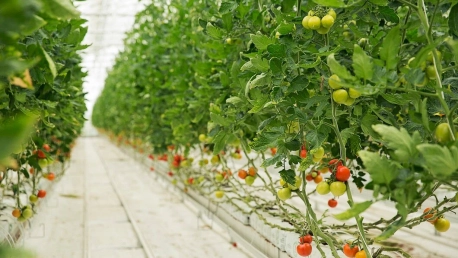The advances of nanotechnology offer farmers more targeted and efficient pesticide usage, but the implications for ecosystems are worrisome. As nano-pesticides gain traction, they promise to decrease the quantity of chemicals sprayed on crops, aiming for precision and controlled release. Yet, there’s an undercurrent of concern among environmentalists regarding the unknown and potentially hazardous side effects of these materials on the broader environment.
The Promise of Nano-Enabled Pesticides
Targeted Delivery and Reduced Use
Nanotechnology promises a significant enhancement in the way pesticides are delivered and used in agriculture. By encapsulating the active ingredients within nanocarriers, these advanced formulations can adhere to plant surfaces more effectively and release their payload in response to environmental triggers such as moisture or pest interactions. This targeted delivery system aims to reduce the overall volume of pesticides used, with the aim of minimizing not just costs, but also the potential for runoff and environmental contamination.
Prolonged Effect and Selective Action
Through the slow or controlled release mechanisms, nano-pesticides offer prolonged protection for crops, potentially reducing the frequency of applications needed. This means that farmers can ensure lasting pest resistance with less product, benefiting both the environment by reducing the chemical load and the agricultural industry by lowering expenses. Aside from the slow release, these nanomaterials can also be engineered to specifically target certain pests, thereby reducing the collateral impact on non-target species and beneficial insects.
Concerns Over Environmental Impacts
Toxicity and Accumulation Risks
Despite the benefits, there is growing concern over the possible environmental ramifications of nano-enabled pesticides. There’s the risk that these nanoparticles, due to their minuscule size and novel properties, could be more readily absorbed not just by the pests they are meant to control, but also by a range of non-target organisms. This can potentially disrupt ecosystems and food chains, with smaller organisms at the base being particularly vulnerable. More worryingly, the persistence of these nanoparticles in the environment might lead to an increased accumulation of toxins in the soil and waterways, threatening aquatic life and pollinators essential for the health of natural habitats.
Detection and Regulation Challenges
Nanotechnology in agriculture brings a new era of precision, significantly reducing the volume of pesticides needed for crop protection. These advanced nano-pesticides focus on specificity and a controlled release method that potentially enables farmers to use chemicals more efficiently than ever before. However, these breakthroughs do not come without significant concerns. Environmental groups are apprehensive about the long-term effects these tiny particles might have on natural ecosystems. The fear is that despite their benefits in agriculture, nano-pesticides could pose severe risks to environments due to their unknown reactivity and potential accumulation. As the use of these materials becomes more widespread, the urgent need to understand and mitigate any negative environmental impacts becomes increasingly critical. The scientific community is thus faced with the delicate task of balancing agricultural innovation with the preservation of ecological health.









